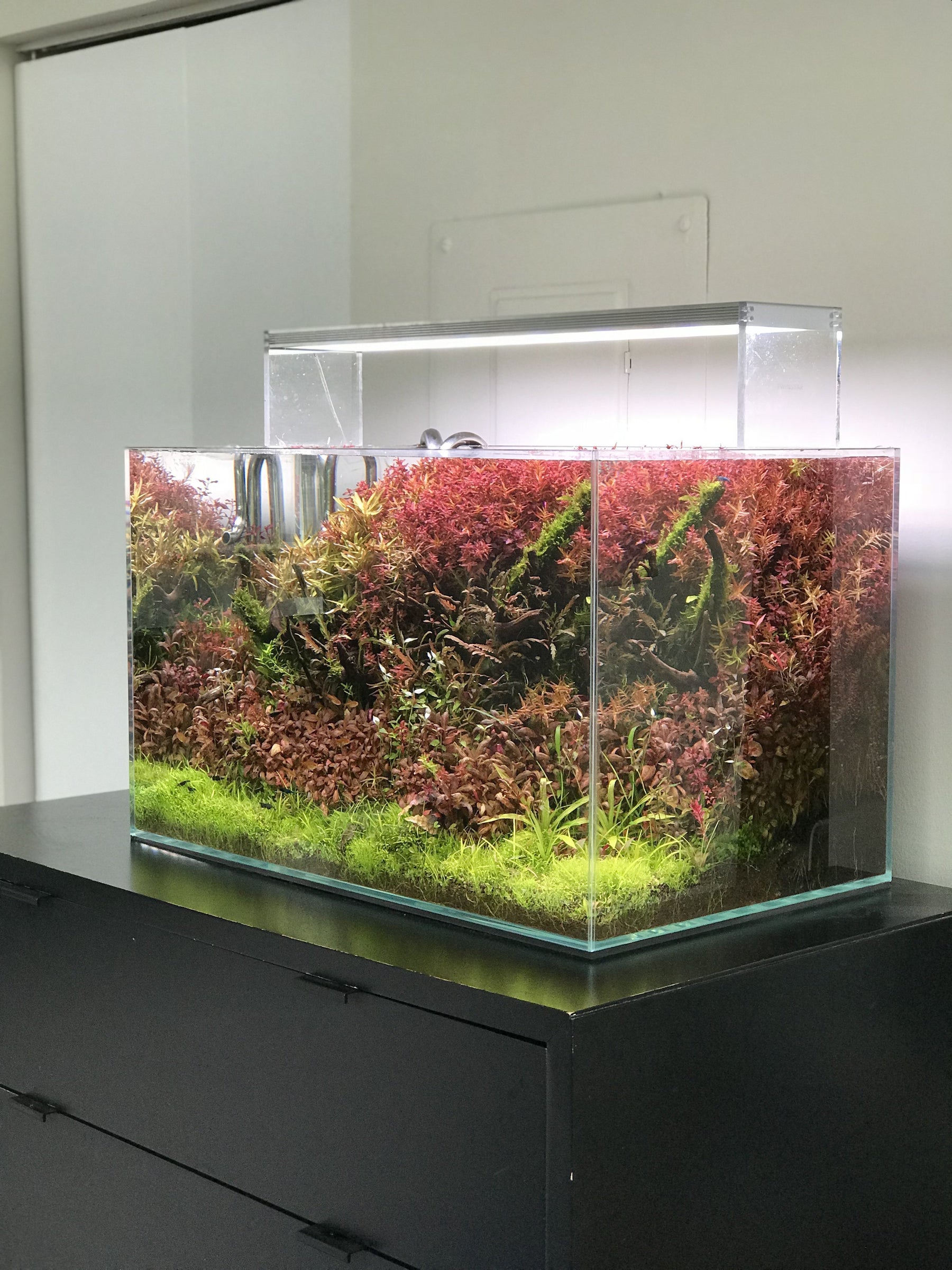
Best Practices for Trimming Aquarium Stem Plants
by: Chris (@shrimpery)
What is it that makes a professional-quality planted aquarium look so good? Well-trimmed plants. More than layout or hardscape selection, the plants set the tone for a tank. Nothing looks more amateur than stringy, unbranching stems gasping for air at the surface. Instead, stem plants should resemble colorful, compact bushes. Fortunately, as long as you have a bright light (I’d recommend a Twinstar RGB LED or similar fixture), bushy stems can easily be achieved by anyone with a pair of scissors. It’s all about the trimming.

It may seem counterintuitive, but aggressive trimming is key to achieving a bushier, more compact growth habit. Novice hobbyists sometimes wind up with stringy stems because they are concerned about disrupting the plant’s growth. But in reality, for most stem plants, a sort of hydra effect takes place at the site of each trim: for every one cut, two new buds will grow from the original stem. Repeat this maneuver with each of the new branches after they grow out a bit, and a kind of fractal effect is achieved, resulting in the desired bush.
I like to initially plant the stem plants deep into the substrate, with only a small amount protruding above the substrate surface. This is to ensure stability before roots are put down. After the stem has grown about an inch, I do my first trim, right at the tip where the terminal bud connects to established growth. I repeat this process frequently, allowing two to three nodes to develop between each trim (nodes are the points where the leaves connect to the main stem). As previously mentioned, two new stems will typically grow from the node immediately below the trim point. Proper nutrients from a complete fertilizer, good lighting, and CO2 will speed along this growth and result in more colorful plants.
You should save the clippings, and plant them right alongside the parent plants. Don’t be afraid to go as dense as possible- it’s completely okay if the plants are touching (a bright light fixture will ensure that each stem still gets enough light, regardless of shading. This will add to the density of the bush. When trimming, try to create a slope from front to back, with the back being the tallest. This will create a sense of scale (as opposed to a monolithic wall). Finally, don’t worry about trimming the bottoms and replanting the tops unless it’s apparent that the bottoms have died or are showing through and proving unsightly. Just allow the parent plant to grow, trimming the uppermost portions.
Hopefully, this post has given you a handle on how to properly trim stem plants to achieve the best possible shape. You’ll soon have a dense bush of rotala, ludwigia, or whatever. Don’t be afraid to use the scissors!
Tell us - Was this article helpful? Please leave a comment below!
If you have any questions regarding this article, please DM us on Instagram, Facebook, or email support@buceplant.com so we can assist you - @buceplant






Comments
Leave a comment